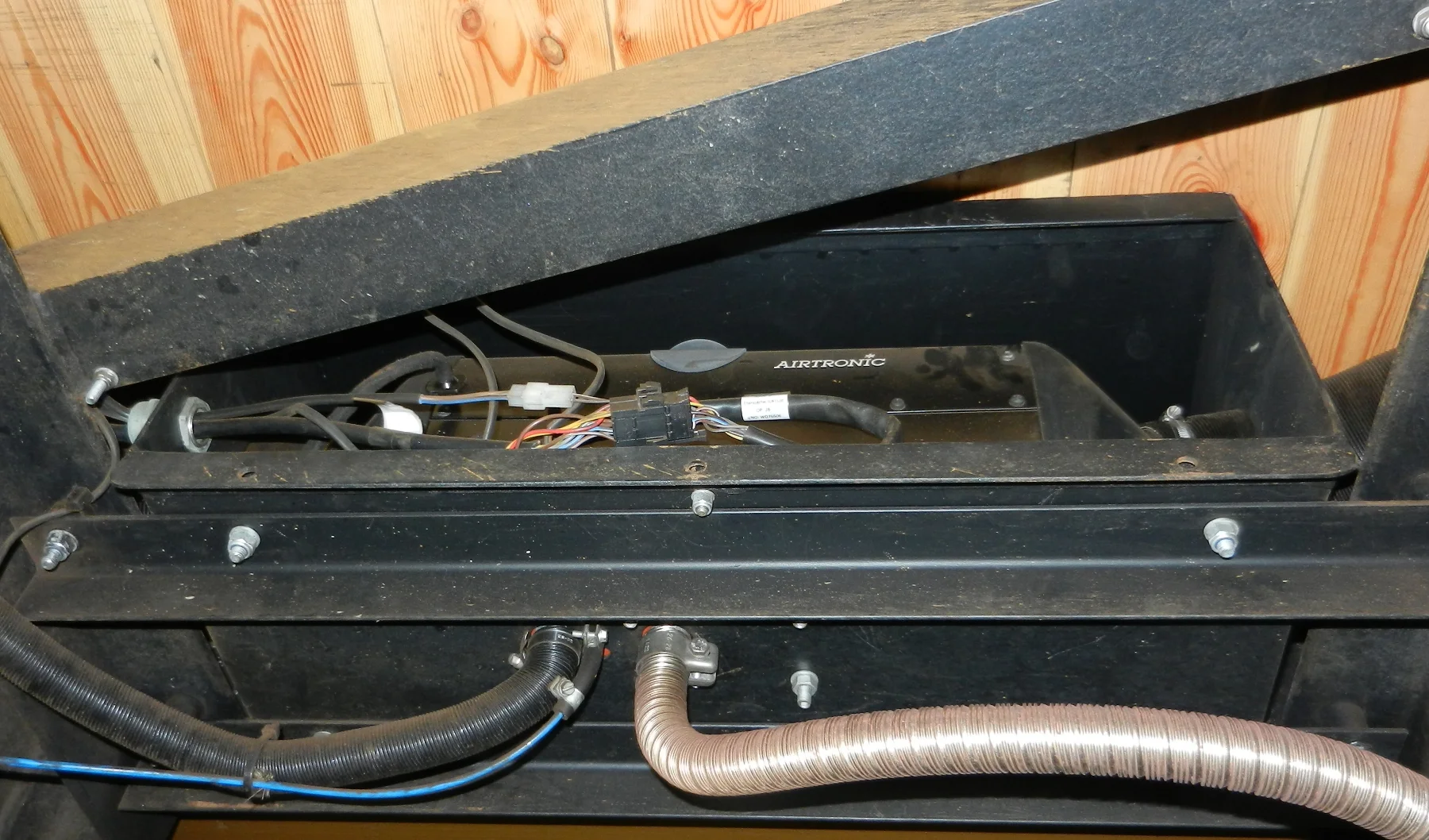An Update on Carriage Heating
The Christmas train service has been a feature of TR operation for many years now, but until 1996 passengers had to make do with unheated carriages. In 1995 thoughts turned to providing some form of heating, to at least take the chill off. There were a number of possible options available:
1. Steam – Traditionally used on railways in the days of steam, including narrow gauge lines such as the Lynton and Barnstaple, the Vale of Rheidol and the Welshpool and Llanfair.
2. Gas or oil fired heaters as used in caravans or boats.
3. Electric heaters powered by a generator.
4. Electric storage heaters.
Steam would have been nice to have, but installation would have been a big job especially considering that it could not be done piecemeal – the steam pipe would have to run right through the train to allow for the fact that the locomotive could be at either end.
Gas was eliminated because of safety hazards, but oil fired heaters remained a possibility, though they were expensive.
A generator would need a vehicle to house the generator and the generator would be noisy.
Electric storage heaters however were relatively cheap to buy, easy to install and the job could be done piecemeal without having to install heaters in the whole of a train in one go.
In 1996, therefore, electric storage heaters were installed in three bogie carriages. This was for evaluation initially but their use was subsequently extended and they have remained in use for over twenty years.
One problem of the electric heaters became apparent fairly quickly. Each coach fitted with heaters had to be individually plugged into a mains supply to allow the heaters to heat up overnight. It wasn’t long before a guard took the train out of the carriage shed without remembering to unplug the cables, which did the wiring no good at all.
The heaters used were domestic units of the smallest size available. These would just fit under the window on the opposite side of a standard compartment to the door. They were screwed to the side of the coach and were connected by plug and socket to the carriage wiring, so that they could be easily removed. Some passengers failed to understand how the heaters worked, as on a bright winter day we would find some of the heaters unplugged, where passengers had obviously thought this would turn the heating off.
Disadvantages of these heaters included the space they took up in the compartments. They also suffered from the vibration of the moving train, and from repeated installation and removal from the compartments. This latter also presented manual handling hazards. In particular there was also the hazard of having electric heaters heating up unattended in flammable wooden coaches overnight. By now, though, heating was an integral part of our winter operation, so we needed to look at another option.
I paid a visit to Boston Lodge to look at the Ffestinog Railway’s installations of oil-fired warm air heaters, and the result was a recommendation to install one of these in carriage 21 (the body of which had been built at Boston Lodge in 2012). In autumn 2015 an FR fitter came to Pendre to fit a heater to No. 21. The installation took rather longer than anticipated, but once the teething problems were overcome the heater has been very successful. The only problem so far was when the heater started making large amounts of white smoke, and then stopped working completely. Investigation found that the reason was that there was no fuel in the tank!
Council authorised another three installations, but the FR seemed reluctant to come and do them for us. A phone call to the heater manufacturers (Eberspächer) established that they would supply us with FR heater kits directly. Three kits were ordered and we set to work ourselves to install one of these in carriage 19, copying the installation in No. 21 as far as possible. The result was successful, and saw use over this year’s early season/Easter service allowing the storage heaters that had been in No. 19 to be removed. The remaining two heater kits will be installed in carriage 22, as part of its continuing rebuild; and in carriage 23.
Although expensive compared to the storage heaters, the new heaters do have the advantage that they are doing the job they were designed for. As mentioned, the Ffestiniog Railway have been using them for some time. They are also used in boats, motor caravans, road coaches and truck cabs. They are thermostatically controlled so that on a warm day they will shut themselves down and if we run a winter evening train we should be able to heat it, where the storage heaters would have gone cold. Also the heaters are mounted under the carriage floor and so take up only a minimal amount of space in the compartment.
John Burton


